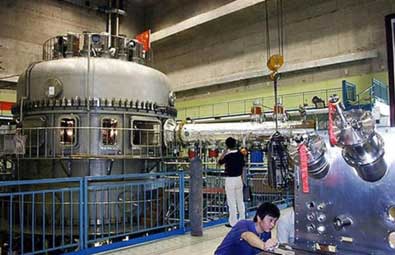In a breakthrough, a ‘man-made’ sun experiment in China has successfully produced long pulse plasma discharge at a temperature of more than 50 million degrees — the longest discharge at such a high temperature.
- The Experimental Advanced Superconducting Tokamak (EAST), an artificial sun experiment developed by Hefei Institute of Physical Science of the Chinese Academy of Science, realised a ultra-high temperature (UHT) long pulse plasma discharge for 102 seconds as of January.
- An artificial sun can provide limitless clean energy through controlled thermonuclear fusion.
- The light and heat of the Sun come from two of hydrogen’s radioactove isotopes – deuterium and tritium.
- These release a huge amount of energy during the process of fusion into a helium atom.
- The artificial sun imitates this fusion process.
- The Experimental Advanced Superconducting Tokamak (EAST), internal designation HT-7U) is an experimental superconducting tokamak magnetic fusion energy reactor in Hefei, China.
- The Hefei-based Institute of Plasma Physics is conducting the experiment for the Chinese Academy of Sciences.
- It has operated since 2006. It was later put under control of Hefei Institutes of Physical Science.
- It is the first tokamak to employ superconducting toroidal and poloidal magnets. It aims for plasma pulses of up to 1000 seconds.
- The project was proposed in 1996 and approved in 1998.

















